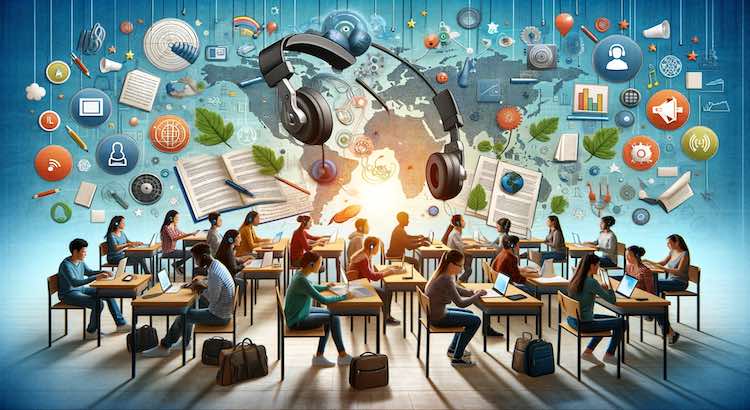The Impact of Audio Transcription Services in Education
Technology continues to reshape how we learn and teach. One valuable tool leading the way is audio transcription. Audio transcription services turn spoken words from lectures, podcasts, and videos into easy-to-read text. This article explores the key roles of transcription in modern classrooms and online learning.
How Audio Transcription Services Enhance Education
Improving Accessibility and Inclusivity
Audio transcription opens doors for students with hearing difficulties and those who need content in written form.
- 1 in 8 people in the United States has hearing loss (CDC, 2023).
- Transcripts help all students take part in lessons, regardless of ability.
- Accessible materials remove barriers to education and support regulations like the ADA.
Schools and universities meet accessibility goals by using transcription services to provide equal opportunities for all.
Supporting Varied Learning Styles
Different students learn best in different ways. Audio transcription helps meet various needs:
- Visual learners can read and review written text.
- Students can highlight and annotate transcripts for better study retention.
- Written content helps those who struggle to follow audio or complex language.
Transcripts are more than just a record—they are study guides that reinforce classroom content.
Promoting Multilingual Learning
Many education institutions have learners from diverse language backgrounds.
- Transcripts can be translated, so non-native speakers can follow lessons in their own language.
- Online classes attract a global audience, and written materials make understanding easier for everyone.
- Schools can use text translation services and audio translation services for wider reach.
Transcription services build a bridge across cultures and support inclusivity.
Making Research and Studying More Efficient
Academic research requires accurate referencing and quick data search.
- Written transcripts are searchable, so students can find facts or quotes fast.
- Teachers and researchers waste less time listening to hours of audio for one detail.
- Transcription proofreading services keep research reliable.
This streamlined approach helps maintain high academic standards and speeds up the learning process.
Boosting Student Engagement
Transcripts do more than serve as a backup—they enhance how students engage with learning material.
- Combining audio, video, and text meets modern learners' needs (EDUCAUSE, 2022).
- Students can choose the best medium for them at any time.
- Written content supports deeper understanding and memory retention.
When learners have choices, they participate more and retain information better.
Supporting Asynchronous and Remote Learning
The need for flexible learning options is increasing. Transcription services make it easier to study from anywhere.
- Transcripts allow students to catch up on missed lectures.
- Working professionals and remote learners can fit study around other commitments.
- With tools like automated transcription and AI transcription subscriptions, access is instant and convenient.
Flexible learning supports student success by adapting to busy schedules.
Ensuring Accuracy in Educational Content
Maintaining accurate records is vital in education.
- Human transcriptionists capture technical language, context, and speaker differences that automated software may miss (Stanford, 2022).
- Reliable transcripts support fair exams, precise study guides, and clear lecture notes.
- Schools can use closed caption services and subtitling services for video materials.
Careful attention to detail keeps learning accurate and trustworthy.
Practical Applications of Transcription in Education
- Lecture and seminar transcripts
- Interview and focus group documentation for research
- Video lesson subtitles for online courses
- Accessible course content for students with disabilities
- Summaries and study materials for all subjects
Institutions can compare transcription pricing and captioning services pricing to fit their budget.
Conclusion
Audio transcription services make education more open, inclusive, and effective for everyone. They remove barriers, support different learning styles, and help both teachers and students stay organized. As teaching goes digital, transcription tools will remain essential.
At GoTranscript, we offer complete solutions for educational transcription—including academic transcription, captioning, and translation services. Whether you need to order transcription or order captions, our team helps deliver accessible learning for all.



















 Verified Order
Verified Order